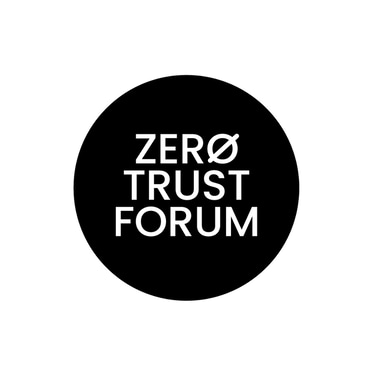ZTNA vs. ZTA: Navigating the Zero Trust Landscape
Two prominent approaches within this paradigm are Zero Trust Network Access (ZTNA) and Zero Trust Architecture (ZTA). While often used interchangeably, they represent distinct strategies with nuanced differences. This article delves into the intricacies of ZTNA and ZTA, exploring their key characteristics, benefits, and how they can be effectively implemented to safeguard sensitive data and applications.
Jaye Tillson
12/4/20243 min read


In today's increasingly interconnected world, where cyber threats are evolving at an alarming pace, organizations are turning to Zero Trust security models to bolster their defenses.
Two prominent approaches within this paradigm are Zero Trust Network Access (ZTNA) and Zero Trust Architecture (ZTA). While often used interchangeably, they represent distinct strategies with nuanced differences.
This article delves into the intricacies of ZTNA and ZTA, exploring their key characteristics, benefits, and how they can be effectively implemented to safeguard sensitive data and applications.
Understanding Zero Trust
Before diving into ZTNA and ZTA, it's essential to grasp the fundamental principles of Zero Trust. This security model, rooted in the adage "never trust, always verify," shifts the traditional security paradigm from perimeter-based defenses to a more granular, user-centric approach.
In a Zero Trust environment, no user, device, or application is inherently trusted, regardless of its location within or outside the network.
Zero Trust Network Access (ZTNA)
ZTNA is a specific implementation of Zero Trust principles that focuses on securing remote access to applications and resources. It operates on the premise that users and devices should only be granted access to the specific applications and data they require, and only when they need it. Key characteristics of ZTNA include:
Least Privilege Access: Users are granted the minimum level of access necessary to perform their tasks, limiting potential damage in case of a compromise.
Continuous Verification: ZTNA solutions constantly monitor user and device behavior, revalidating access privileges as needed to mitigate risks.
Dynamic Access Policies: Access policies are dynamically adjusted based on real-time risk assessments, ensuring that only authorized individuals can access sensitive resources.
Benefits of ZTNA
Enhanced Security: By eliminating the concept of a trusted network perimeter, ZTNA significantly reduces the attack surface and mitigates the risk of lateral movement within the network.
Improved Visibility and Control: ZTNA provides granular visibility into user activities, enabling organizations to identify and respond to potential threats promptly.
Simplified Remote Access: ZTNA offers a secure and seamless way for remote workers to access corporate resources, without the need for traditional VPNs.
Reduced Complexity: ZTNA solutions often streamline management and reduce the overhead associated with maintaining traditional security infrastructure.
Zero Trust Architecture (ZTA)
ZTA encompasses a broader set of principles and technologies that support the implementation of Zero Trust across an entire organization. It provides a comprehensive framework for securing all aspects of the IT environment, including networks, applications, and data. Key components of ZTA include:
Identity and Access Management (IAM): Strong identity verification and authentication mechanisms are essential to ensure that only authorized individuals can access resources.
Network Segmentation: Dividing the network into smaller segments helps to contain the spread of potential attacks and limit the impact of breaches.
Data Protection: Robust data encryption and classification measures are critical to safeguard sensitive information.
Security Analytics and Threat Detection: Continuous monitoring and analysis of network traffic and user behavior can help identify and respond to threats in real-time.
Benefits of ZTA
Comprehensive Security: ZTA provides a holistic approach to security, addressing all aspects of the IT infrastructure.
Improved Resilience: By eliminating the traditional network perimeter, ZTA makes it more difficult for attackers to gain a foothold in the organization.
Enhanced Compliance: ZTA can help organizations meet regulatory requirements by ensuring that sensitive data is properly protected.
Future-Proofing: ZTA is a flexible and adaptable framework that can evolve to meet the changing needs of the organization.
ZTNA vs. ZTA: A Complementary Relationship
While ZTNA and ZTA may seem distinct, they are often used in conjunction to achieve optimal security outcomes. ZTNA can be considered a key component of a broader ZTA strategy. By implementing ZTNA solutions, organizations can effectively secure access to applications and data, while ZTA provides the overarching framework for managing risk across the entire IT environment.
Implementing Zero Trust
Implementing a Zero Trust security model requires a significant cultural shift and a commitment to continuous improvement. Some key steps involved in the implementation process include:
Assess Your Current Security Posture: Evaluate your existing security infrastructure, identify gaps, and prioritize areas for improvement.
Define Your Zero Trust Strategy: Develop a clear and comprehensive Zero Trust strategy that aligns with your organization's specific needs and risk profile.
Implement ZTNA Solutions: Deploy ZTNA solutions to secure access to critical applications and data.
Enforce Strong Identity and Access Management: Implement robust IAM practices to ensure that only authorized individuals can access resources.
Continuously Monitor and Adapt: Regularly monitor your security posture and make necessary adjustments to stay ahead of emerging threats.
Conclusion
In an era of increasing cyber threats, Zero Trust security models have become essential for organizations seeking to protect their sensitive data and applications.
ZTNA and ZTA, while distinct in their focus, work together to provide a comprehensive and effective approach to security.
By embracing Zero Trust principles and implementing appropriate technologies, organizations can significantly reduce their risk exposure and build a more resilient security posture.
